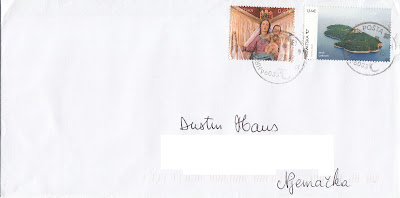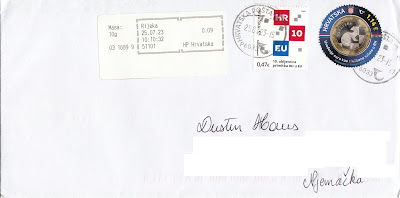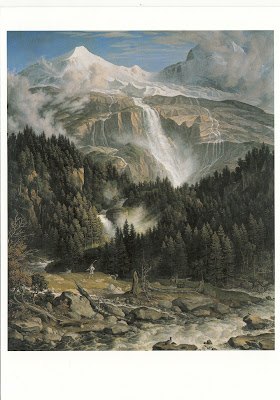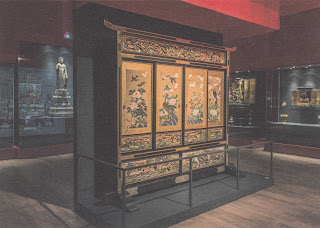Thank You very much Marcel!
My postcard and stamp week
In this blog I will show all postcards and covers I got!
Pages
Thursday, October 10, 2024
7th August 2023: Museum Koenig in Bonn, Germany
Thank You very much Marcel!
3rd August 2023: Triple Bridge in Ljubljana, Slovenia
Thank You very much William!
3rd August 2023: Map of Salzburg, Austria
3rd August 2023: Covers from Croatia
Rijeka, Croatia
Thank You very much William!
Haus Bürgel in Monheim am Rhein, Germany
Thank You very much Marcel!
Cover from Andorra
Wednesday, October 9, 2024
Summer Holidays 2023 Part 2: Munich, Tyrol and Salzburg
Dachau is a town north-west of Munich. In March 1933 one of the first concentration camps in Nazi Germany was opened there. The camp was initially intended to intern Hitler's political opponents, but soon its purpose was enlarged to include forced labor, and eventually, the imprisonment of Jews, Romani, German and Austrian criminals, and, finally, foreign nationals from countries that Germany occupied or invaded. When the main camp was liberated by American troops in April 1945, it was the longest running concentration camp of the Nazis. Nowadays its remains are used as an memorial.
The Bavaria is a monumental bronze statue constructed at the behest of King Ludwig I between 1843 and 1850.
The Feldherrnhalle is a monumental loggia on the Odeonsplatz. Modelled after the Loggia dei Lanzi in Florence, it was commissioned in 1841 by King Ludwig I of Bavaria to honour the tradition of the Bavarian Army. In 1923 it was the site of the brief battle that ended Hitler's Beer Hall Putsch.
The Munich Residenz was the residence of the Bavarian monarchs between 1508 and 1918. Next to it is the Bavarian State Opera.
The Frauenkirche serves as the cathedral of the Archdiocese of Munich and Freising. It is a landmark and is considered a symbol of the Bavarian capital city. It is the biggest hall church in the World.
The Church of the Holy Spirit is one of the oldest surviving churches in Munich. Originally a Gothic hall church, Baroque elements were added later on.
The Asam Church is one of the most important examples of southern German Late Baroque.
The Jewish Centre was opened in 2006. It includes the new Ohel Jakob Synagogue as well as the Jewish Museum.
The Alte Pinakothek is an art museum opened in 1836. It shows the Old Masters' paintings from the Bavarian State Painting Collections, one of the most famous collections of its kind in the World.
The Neue Pinakothek is dedicated to European art of the 19th century. Since 2019 it is closed due to renovations and will probably not open again until 2029. I got this card at the Alte Pinakothek, where some highlights of the Neue Pinakothek are currently on display.
The Pinakothek der Moderne shows the art of the 20th and 21st centuries from the Bavarian State Painting Collections.
The Museum Five Continents was opened in 1862 and is thus the oldest ethnological museum in Germany.
The Bavarian National Museum is one of the most important museums of decorative arts in Europa and one of the largest art museums in Germany. Unfortunately they did not have cards of the impressive building.
Mariastein is an important pilgrimage church in Tyrol.
Kufstein is the second largest city in the Austrian State of Tyrol.
Maria Plain is a Baroque pilgrimage church near Salzburg. In 1952 it was awarded the title Basilica minor.
The Salzburg Museum is a museum of artistic and cultural history for the city and region of Salzburg. It was opened in 1834 and moved to its current site at the former New Residence in 2005. It got the European Museum of the Year Award in 2009.





















































































